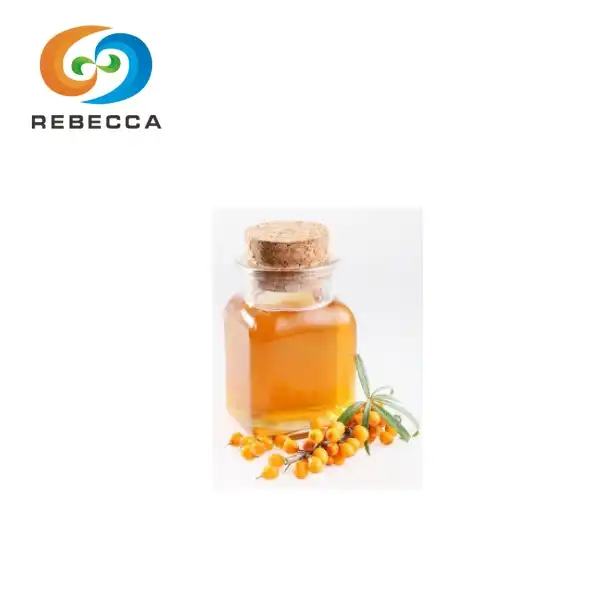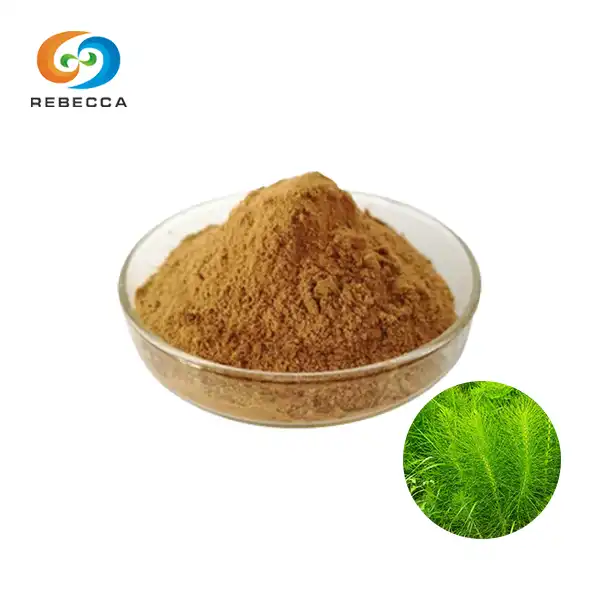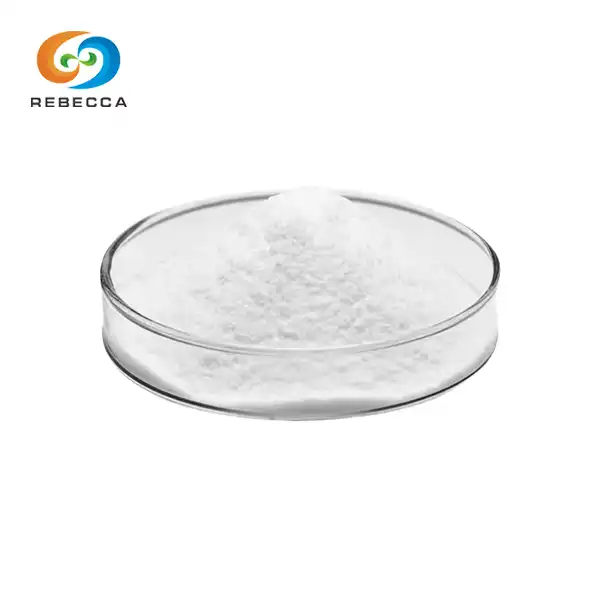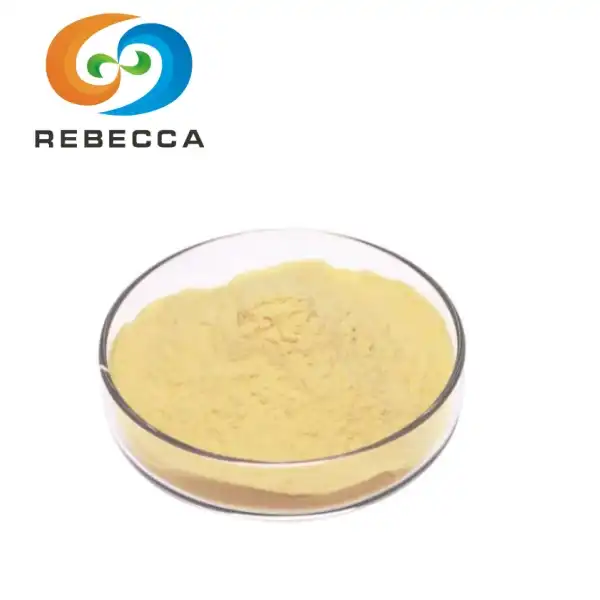Are there isoflavones in soy protein powder?
Yes, soy protein powder typically contains isoflavones, naturally occurring compounds found in soybeans. These bioactive substances, often referred to as phytoestrogens, are retained during the protein extraction process. The presence of soy isoflavone powder has garnered significant attention due to its potential health benefits. However, the exact isoflavone content can vary depending on the type of soy protein powder and processing methods used.
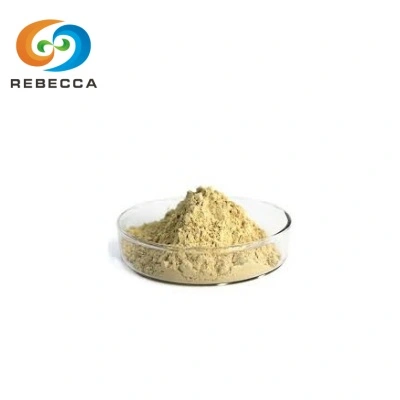
Soy Isoflavones Powder
Product Name:soy isoflavones powder
Botanical Source: Non-gmo soybean germ or soybean meal.
Latin Name:Glycine max (Linn.) Merr.
Other Name:Soybean Extract,CatheRine Genistein,Soy Isoflavone,574-12-9,soy extract,glycine soja (soybean) seed extract,glycine soja seed extract,Soybean P.E.
Active ingredients:Soy Isoflavones,Daidzin, daidzein, Genistin, Genistein, Glycitin, Glycitein.
Specification:40% 90%
Appearance: Light yellow to white powder
Test Method: HPLC
Solubility: Insoluble water and soluble in water both have.
Molecular Formula: C15H10O2
Molecular Weight: 222.24
CAS No.: 574-12-9
MOQ: 1kg
Sample: 20g
Delivery: FedEx, DHL, Ship by air, Ship by sea.
Certifications: ISO, HACCP, KOSHER, HALAL
Why Does Soy Protein Powder Contain Isoflavones?
Natural occurrence of isoflavones in soybeans
Isoflavones are naturally present in soybeans, serving as the plant's defense mechanism against environmental stressors. These compounds belong to a class of polyphenols and are structurally similar to estrogen, hence their classification as phytoestrogens. The primary isoflavones found in soybeans are genistein, daidzein, and glycitein, along with their respective glycosides.
Soybeans contain varying amounts of isoflavones, typically ranging from 1 to 3 mg per gram of dry weight. This natural content is influenced by factors such as soybean variety, growing conditions, and harvest time. The isoflavone profile in soybeans contributes to their nutritional value and potential health-promoting properties.
Retention during protein extraction process
During the production of soy protein powder, isoflavones are largely retained due to their chemical properties. The extraction process, which typically involves water or alcohol-based methods, does not completely eliminate these compounds. In fact, some extraction techniques may concentrate isoflavones along with the protein fraction.
The degree of isoflavone retention depends on the specific extraction and processing methods employed. For instance, alcohol washing, often used in producing soy protein isolates, can reduce isoflavone content compared to less processed soy protein concentrates. However, even highly purified soy protein powders still contain measurable amounts of isoflavones.
Health benefits of soy isoflavones
The presence of isoflavones in soy protein powder has sparked interest due to their potential health benefits. Research suggests that soy isoflavones may contribute to various positive health outcomes, particularly in the areas of cardiovascular health, bone density, and menopausal symptom relief.
Some studies indicate that soy isoflavones may help maintain healthy cholesterol levels and support cardiovascular function. Additionally, these compounds have been associated with improved bone mineral density, especially in postmenopausal women. The estrogenic activity of isoflavones may also help alleviate some menopausal symptoms, such as hot flashes.
It's important to note that while these potential benefits are promising, individual responses to soy isoflavones can vary. Factors such as gut microbiota composition and genetic differences in isoflavone metabolism can influence their effects on health.
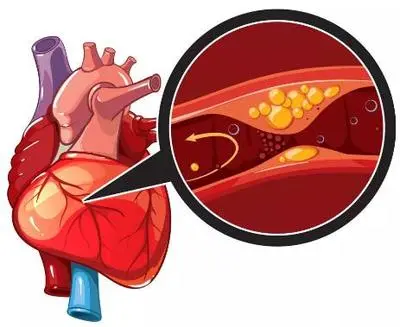
Isoflavone Content: Variability by Protein Type
Comparing isolate vs concentrate soy protein powders
The soy isoflavone content can vary significantly between isolates and concentrates. Soy protein isolates, which undergo more extensive processing to achieve a higher protein concentration (90% or more), generally contain lower levels of isoflavones compared to soy protein concentrates (70-80% protein).
Soy protein concentrates typically retain more of the naturally occurring isoflavones due to less aggressive processing. On average, soy protein concentrates may contain 2-3 mg of isoflavones per gram of protein, while isolates might contain 1-2 mg per gram. However, these values can vary widely depending on the specific product and manufacturing process.
Impact of processing methods on isoflavone levels
The processing methods used in soy protein powder production significantly influence the final isoflavone content. Alcohol washing, commonly used in producing soy protein isolates, can reduce isoflavone levels by up to 80-90%. Water extraction methods, often employed for concentrates, tend to preserve more isoflavones.
Heat treatment during processing can also affect isoflavone profiles. High temperatures may cause changes in the chemical structure of isoflavones, potentially altering their bioavailability and biological activity. Some manufacturers use specialized techniques to preserve or even concentrate isoflavones in their soy protein products, catering to consumers seeking higher isoflavone content.
Factors affecting isoflavone content in soy products
Several factors can influence the isoflavone content in soy protein powders:
- Soybean variety: Different soybean cultivars naturally contain varying levels of isoflavones.
- Growing conditions: Factors such as climate, soil quality, and agricultural practices can affect isoflavone synthesis in soybeans.
- Harvesting time: The maturity of soybeans at harvest can impact their isoflavone profile.
- Storage conditions: Prolonged storage or exposure to high temperatures may degrade isoflavones.
- Processing techniques: As mentioned earlier, different extraction and purification methods significantly affect isoflavone retention.
Understanding these factors is crucial for manufacturers aiming to produce soy protein powders with consistent isoflavone content. It's also valuable information for consumers and health professionals seeking to make informed choices about soy protein supplementation.
How to Check the Exact Isoflavone Content?
Reading nutrition labels for isoflavone information
Many soy protein powder manufacturers now include isoflavone content on their product labels. This information is typically expressed in milligrams per serving or per 100 grams of product. When reading labels, look for terms like "total isoflavones," "soy isoflavones," or specific isoflavone names such as genistein, daidzein, and glycitein.
It's important to note that not all labels provide detailed isoflavone information. Some may only list a total isoflavone content without breaking down individual compounds. If isoflavone content is a critical factor in your decision-making process, seek products that offer comprehensive labeling.
Third-party lab testing for accurate measurements
For the most accurate determination of isoflavone content, third-party laboratory testing is the gold standard. These tests use advanced analytical techniques such as high-performance liquid chromatography (HPLC) to quantify individual isoflavone compounds precisely.
Some manufacturers voluntarily submit their products for third-party testing and certification. Look for certifications or seals from reputable testing organizations on product packaging or company websites. These independent verifications can provide assurance of the product's isoflavone content and overall quality.
Contacting manufacturers for detailed specifications
If you require specific information about isoflavone content that isn't readily available on product labels or websites, contacting the manufacturer directly is often the best approach. Reputable soy protein powder producers should be able to provide detailed specifications, including:
- Total isoflavone content
- Breakdown of individual isoflavone compounds
- Information on processing methods that may affect isoflavone levels
- Batch-to-batch consistency data
When reaching out to manufacturers, be specific about your requirements. For instance, if you're looking for a soy protein powder with a particular isoflavone profile for research or product development purposes, communicate these needs clearly to ensure you receive the most relevant information.
Soy protein powder does indeed contain isoflavones, naturally occurring compounds that contribute to its potential health benefits. The isoflavone content can vary significantly depending on the type of soy protein powder and processing methods used. While soy protein isolates generally have lower isoflavone levels compared to concentrates, both forms retain these beneficial compounds to some extent. For those seeking precise information on isoflavone content, careful label reading, third-party testing, and direct communication with manufacturers are essential steps. As research continues to uncover the potential benefits of soy isoflavones, their presence in soy protein powder remains a valuable aspect for many consumers and health professionals.
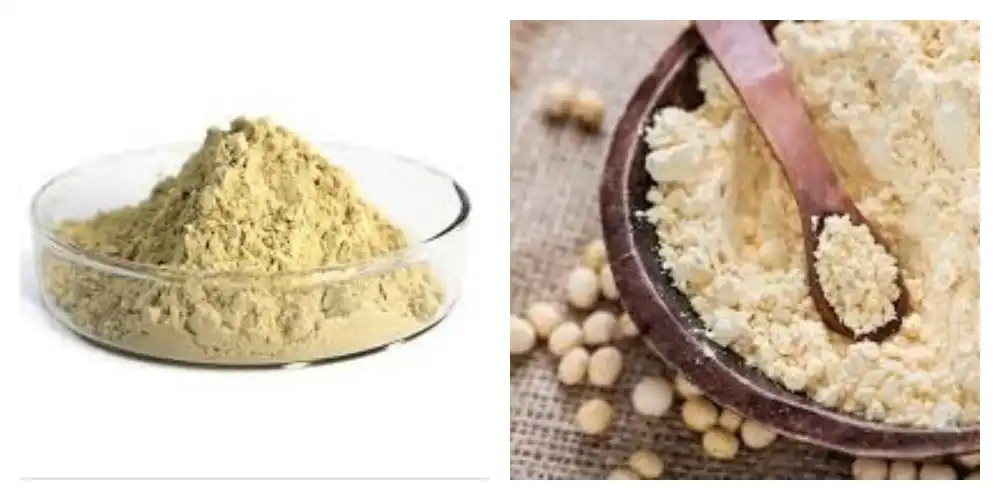
China Soy Isoflavones Powder Supplier
At Shaanxi Rebeccia, we specialize in producing high-quality soy isoflavone using state-of-the-art extraction and purification techniques. Our products are manufactured in strict compliance with GMP and ISO standards, ensuring consistent quality and purity. We offer soy isoflavone powder in various specifications, including 40% and 90% purity, to meet diverse industry needs. Our powder is available in both water-soluble and insoluble forms, catering to different application requirements. With a commitment to quality control at every stage of production, from raw material sourcing to final product delivery, we guarantee the safety and efficacy of our soy isoflavone. For inquiries about our products or to request a sample, contact us at information@sxrebecca.com.
References
- Wang, H., & Murphy, P. A. (1994). Isoflavone content in commercial soybean foods. Journal of Agricultural and Food Chemistry, 42(8), 1666-1673.
- Erdman Jr, J. W., Badger, T. M., Lampe, J. W., Setchell, K. D., & Messina, M. (2004). Not all soy products are created equal: caution needed in interpretation of research results. The Journal of Nutrition, 134(5), 1229S-1233S.
- Messina, M., Nagata, C., & Wu, A. H. (2006). Estimated Asian adult soy protein and isoflavone intakes. Nutrition and Cancer, 55(1), 1-12.
- Setchell, K. D., & Cassidy, A. (1999). Dietary isoflavones: biological effects and relevance to human health. The Journal of Nutrition, 129(3), 758S-767S.
- Kuiper, G. G., Lemmen, J. G., Carlsson, B. O., Corton, J. C., Safe, S. H., Van Der Saag, P. T., ... & Gustafsson, J. Å. (1998). Interaction of estrogenic chemicals and phytoestrogens with estrogen receptor β. Endocrinology, 139(10), 4252-4263.
- Friedman, M., & Brandon, D. L. (2001). Nutritional and health benefits of soy proteins. Journal of Agricultural and Food Chemistry, 49(3), 1069-1086.
